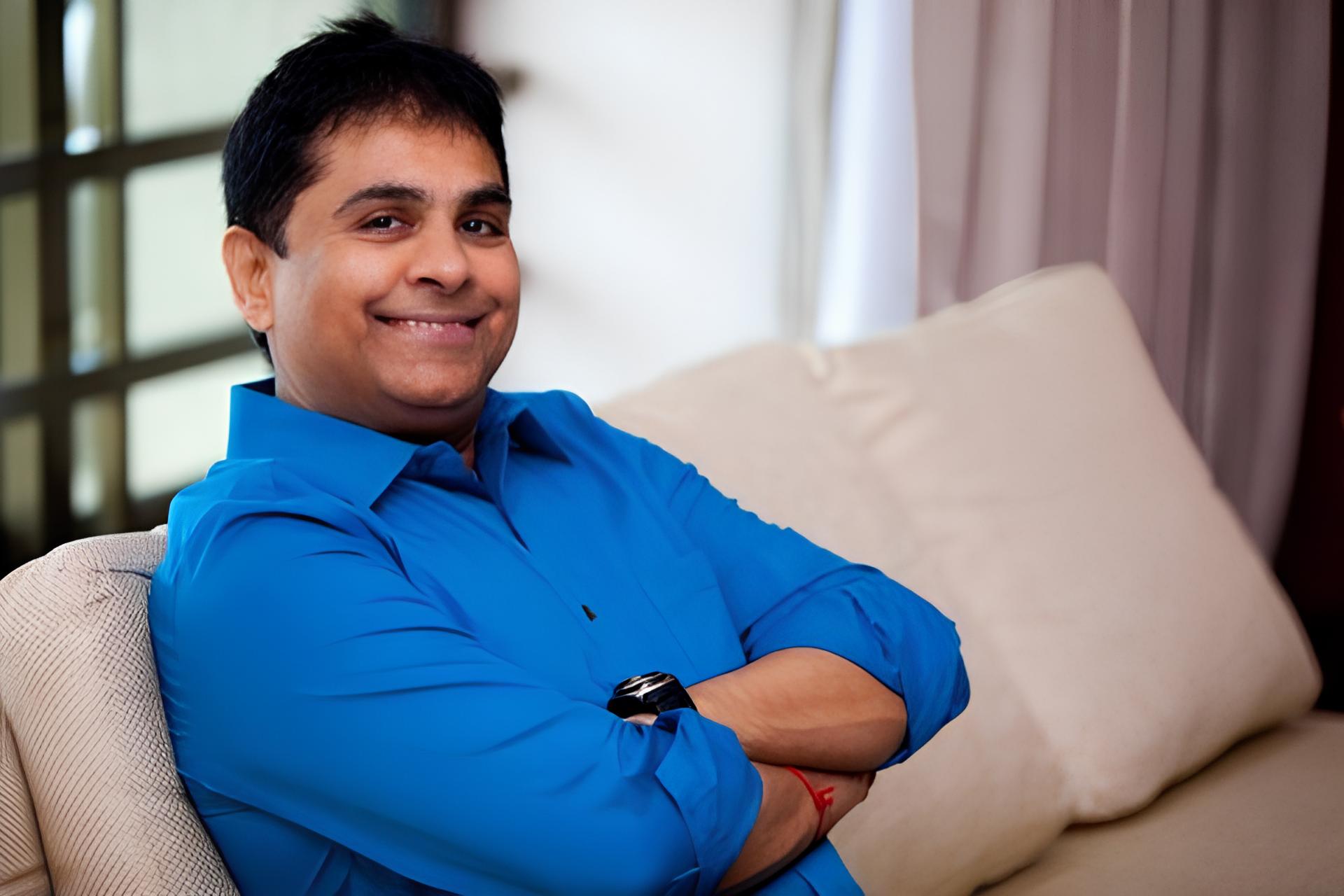Top Traders in India: Rakesh Jhunjhunwala, Vijay Kedia, and Radhakishan Damani
India is home to some of the most influential traders and investors in the world. From self-made billionaires to visionary long-term investors, Indian traders have shaped not only the local stock market but also global financial discourse.
In this article, we explore the lives and strategies of three legendary Indian market players: Rakesh Jhunjhunwala, often called the “Big Bull of India”; Vijay Kedia, known for his multibagger picks; and Radhakishan Damani, the founder of DMart and a master of long-term investing.
Whether you’re a beginner or a seasoned trader, their stories offer powerful lessons in risk-taking, patience, and value investing.
Rakesh Jhunjhunwala
Rakesh Jhunjhunwala (July 5, 1960 – August 14, 2022) was an Indian billionaire investor, stock trader, and chartered accountant. He began investing in 1985 with a capital of ₹5,000 and made his first major profit in 1986. At the time of his death, his net worth was estimated at $5.8 billion, making him the 438th richest person in the world. He was a partner in his own asset management firm, Rare Enterprises.

In addition to being an active investor and stock trader, he also served as chairman and director of several companies. He was also a co-founder of Akasa Air. In 2021, he faced an investigation for insider trading and reached a settlement with the Securities and Exchange Board of India (SEBI). Jhunjhunwala was often referred to as the “Big Bull of India” and was widely known for his stock market predictions and bullish outlook. In 2023, he was posthumously awarded the Padma Shri, India’s fourth-highest civilian honor.
In October 2024, his wife, Rekha Jhunjhunwala, ranked 28th on Forbes’ list of India’s 100 Richest Tycoons, with a net worth of $9.3 billion.
Rakesh Jhunjhunwala’s core investment strategy revolved around buying undervalued stocks with strong future growth potential.
He focused on companies with robust financials, competent management, and clear expansion plans. A prime example was his investment in **Titan**, one of India’s leading jewelry brands, when it was still relatively under the radar. Over the years, Titan’s stock surged dramatically, becoming one of Jhunjhunwala’s most legendary successes.
Key Lessons in Trading and Investing from Rakesh Jhunjhunwala:
Invest in What You Understand
Jhunjhunwala always emphasized the importance of putting money into businesses you can analyze. He avoided complex financial instruments and preferred stocks of companies with clear business models.
- Long-Term Perspective Over Short-Term Fluctuation
Unlike traders who play on market volatility, Rakesh believed in the power of “buy and hold.” Some of his investments (e.g., Titan, Lupin, Crisil) yielded profits for years.
- Trust Your Convictions but Be Prepared for Mistakes
He often said, *”The market can remain irrational longer than you can remain solvent.”* This means even a correct idea may take time to materialize. But if your analysis is sound—stick to your strategy.
- Control Risks
Despite aggressive bets, Jhunjhunwala never put all his money into a single stock. His portfolio was diversified, with the largest positions never exceeding 20-30% of his capital.
- Use Market Panic to Your Advantage
He bought stocks during crises when others were selling. For example, after the Harshad Mehta Scam (1992) and during COVID-19 (2020), he increased positions in promising companies.
- Rely on Fundamental Analysis
Rakesh deeply studied financial reports, debt burdens, management quality, and competitive advantages of companies. He rarely relied solely on technical analysis. A self-made investor and stock market veteran, Vijay Kedia is renowned for his extraordinary stock-picking skills and long-term investment philosophy. His journey began at the age of 14 when he first discovered his passion for the markets. By 19, he started trading, though initially without success. Determined to succeed, he left his hometown Kolkata and moved to Mumbai—the financial capital of India—to chase his dreams.
Vijay Kedia
His breakthrough came in 2004-2005 when he identified and invested in three multibagger stocks—Atul Auto, Aegis Logistics, and Cera Sanitaryware—which soared over 100 times in the next decade. His sharp market instincts were further proven in early 2012 when he accurately predicted that India was on the cusp of a structural bull run.

Recognition followed as Business World ranked him #13 among India’s most successful investors in 2016. The next year, MoneyLife Advisory launched a dedicated microsite—”Ask Vijay Kedia”—showcasing his insights, while his portfolio stocks delivered a staggering 170% return. His expertise earned him invitations to speak at prestigious platforms, including the London Business School (2018) and TEDx (November 2018).
Known for his mantra—”Invest in a business, not a stock”—Kedia inspires millions with his rags-to-riches story, proving that patience, discipline, and deep research are the keys to wealth creation in the stock market.
Vijaya Kedia’s Investment Strategy is based on identifying companies with strong fundamentals, excellent management, and promising growth opportunities.
Some key principles of the strategy:
- Long-term investing. Kedia believes that success in the stock market requires patience, as growth takes time.
- Focus on competent management. Investing in companies with transparent and capable leadership.
- Diversification. Kedia holds stakes across various industries.
- Avoiding market dependence. It’s important to have an alternative source of income.
- Balance. Extreme optimism or pessimism toward market trends should be avoided.
In 2023, Kedia introduced the SHIFT strategy, targeting multiple sectors: the stock market, hospitality and healthcare, infrastructure, tourism, and telecommunications.
Three Key Trading Lessons from Vijay Kedia
- “Patience is the Key to Success”
Kedia believes most traders fail due to impatience. They chase quick profits, but real success comes to those who wait for the right opportunities.
“The market rewards the patient and punishes the greedy.” - “Only Risk What You Can Afford to Lose”
Capital management is the foundation of survival in the market. Kedia emphasizes never risking money that is critical for your livelihood. Emotional trading leads to mistakes.
“If you can’t sleep peacefully because of your positions, you’ve taken too much risk.” - “Learn from Mistakes and Adapt”
The market is constantly changing, and a successful trader must analyze their errors and adjust their strategy. Kedia advises keeping a trading journal and learning from every loss.
“Only those who do nothing make no mistakes. But if you repeat mistakes, you’re not learning.”
Bonus Tip from Kedia:
“Invest in businesses, not stocks”—meaning, study a company’s fundamentals, not just price charts.
Radhakishan Damani
Radhakishan Shivkishan Damani is an Indian billionaire businessman and investor. He is the founder and chairman of the retail chain DMart, earning him the title “India’s Retail King.”As of December 2024, Forbes estimates his net worth at $15.5 billion.
Early Life & Career
Born into a Maheshwari Hindu Marwari family, Damani grew up in a one-room apartment in Mumbai. He studied commerce at the University of Mumbai but dropped out after a year.
After his father’s death (who worked on Dalal Street), Damani left his ball-bearing manufacturing business and became a stockbroker and investor. In the early 1990s, he made huge profits from short-selling stocks artificially inflated by Harshad Mehta. Reports suggest he was the largest individual shareholder of HDFC Bank after its IPO in 1995.

In 1999, he managed a franchise of Apna Bazaar, a cooperative department store in Navi Mumbai, but was unconvinced by its business model. By 2000, he exited the stock market to launch his own hypermarket chain, DMart, opening its first store in Powai (2002).
By 2010, DMart had 25 stores, followed by rapid expansion and an IPO in 2017.
Rise Among Global Billionaires
- 2020: Became India’s 4th richest ($16.5B), ranking 117th globally.
- 2022: Ranked 87th in Forbes’ World Billionaires List ($18.9B).
- October 2024: Damani & family ranked 6th in Forbes’ India Rich List with $31.5B.
Key Principles of Radhakishan Damani’s Investment Strateg:
- Value Investing
- Buys undervalued stocks with strong fundamentals (low P/E, stable cash flow, minimal debt).
- Example: DMart grew slowly but steadily, prioritizing profitability over aggressive expansion.
- Emotional Discipline
- Ignores market “noise” and rarely gives interviews.
- Strict rules: Sells when overvalued, holds for years if the business remains strong.
- Technical Analysis for Entry Timing
- Uses charts to identify entry points (but not for long-term decisions).
- Example: Buys during market panic sell-offs at “bottoms.”
- Portfolio Concentration
- Focuses on a few carefully selected stocks (e.g., DMart, VST Industries).
- Avoids over-diversification.
- Long-Term Horizon
- Believes in patient compounding rather than short-term trading.
Radhakishan Damani’s investment philosophy combines discipline, patience, and deep analysis. Here are three crucial lessons from his trading style:
1. Long-Term Perspective Over Short-Term Noise
Damani is renowned for his patience and ability to hold quality assets despite market volatility.
- Focuses on companies with sustainable business models and holds them for years, avoiding short-term speculation.
- Believes in compounding returns rather than chasing quick gains.
“Time in the market beats timing the market.”
2. Contrarian Mindset: Buy When Others Sell
Damani often goes against the crowd, capitalizing on fear-driven opportunities.
- Buys undervalued stocks during panic sell-offs (e.g., post-crisis investments).
- Avoids overhyped markets where valuations disconnect from fundamentals.
“Be fearful when others are greedy, and greedy when others are fearful.”
3. Fundamentals Over Hype
Unlike traders relying on charts, Damani prioritizes deep fundamental analysis:
- Key metrics: Earnings, debt levels, management quality, competitive advantages.
- Avoids businesses he doesn’t understand (“circle of competence”).
- Example: DMart’s success stemmed from steady profitability, not rapid expansion.
“Invest in businesses, not stock prices.”

